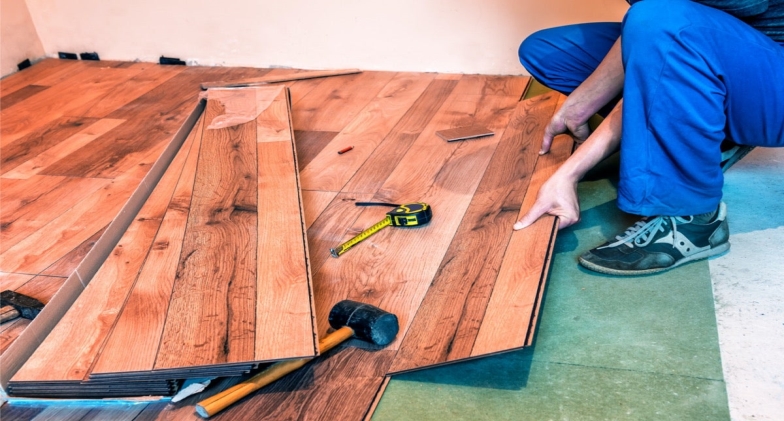Luxury vinyl tile (LVT) is a durable, affordable alternative to traditional tile floors. Its surface protection helps resist stains and spills, making it easier to clean, and its softer underfoot than rigid tile. And it’s easy to install—even for beginner DIYers.
You can lay wood-look LVT over almost any existing tile floor. But before you begin, make sure the tile is in good condition and that your subfloor is ready for flooring. Start by cleaning the tile with a degreaser and sweeping away any loose dirt. Then apply a self-leveling underlayment, like Custom Building Products LevelQuik RS, to smooth and level the surface. Allow the underlayment to dry and acclimate before proceeding with your project.
Some LVT planks feature a locking system that allows you to connect them without adhesive. For example, products with Shaw Floors VersaLock edge snap together and “float” over the surface of your subfloor, similar to laminate boards. If your product uses this technique, precut the planks to fit your room and create a pattern that works best with your space. This way you’ll be able to get all the pieces in place and avoid wasting any.
Other LVTs use a glue-down installation method, in which you apply a thin layer of adhesive to the entire floor. This is ideal for rooms with moisture or humidity problems, such as basements and bathrooms. If your new floor meets with other types of flooring, add transitions to help prevent scuffs and scratches.
The installation process depends on the type of luxury vinyl you choose and your level of DIY expertise. Some LVT is designed to peel and stick, while others need a separate adhesive that you can apply with a trowel or applicator. Products with a peel-and-stick system are perfect for beginner DIYers, while those that need an adhesive require some preparation and patience to get them in place.
After the luxury vinyl is installed, it’s important to keep up with maintenance to keep your floor looking its best. Sweep it regularly to remove dust and dirt and vacuum regularly to pick up larger particles that might scratch the finish. A light mopping with a mild cleaner will remove most stains, but avoid using harsh chemicals that can damage the surface. You’ll also want to install door mats and rugs to protect the surface from scuffs and add protection from moisture. And you’ll want to use furniture coasters to prevent indentations from heavy tables and desks.
Finally, consider adding baseboards or quarter-round moldings to complete the look of your new floor and protect it from scuffs and scratches. By following these tips, you’ll be able to enjoy your new luxury vinyl tiles or planks for years to come. And if you’re not quite ready to tackle the project yourself, ask your local home improvement store for a list of professional installers. They can give you an estimate and schedule a time for a project that fits your timeline and budget.

